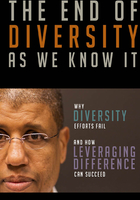
Increased Diversity Doesn’t Make Everyone Happier
Another common hope is that diversity will create a happier, more harmonious workplace. American psychologist Gordon Allport proposed the Contact Hypothesis in 1954, suggesting that people of different groups would generate positive relationships with one another under the proper conditions. Many leaders, perhaps forgetting about these conditions—equal group status, common goals, intergroup cooperation, and support from leaders—expect positive effects simply by assembling groups of diverse people. To be more precise, leaders often rely on increased diversity to build commitment, improve motivation, and reduce conflict. Unfortunately, generating more diversity can have the opposite effect on some individuals. One area of research called “relational demography” has focused on how individual employees react to situations in which they work with people who are demographically similar to themselves as opposed to situations in which they work with people who are dissimilar.
Many leaders, perhaps forgetting about these conditions—equal group status, common goals, intergroup cooperation, and support from leaders—expect positive effects simply by assembling groups of diverse people. To be more precise, leaders often rely on increased diversity to build commitment, improve motivation, and reduce conflict. Unfortunately, generating more diversity can have the opposite effect on some individuals. One area of research called “relational demography” has focused on how individual employees react to situations in which they work with people who are demographically similar to themselves as opposed to situations in which they work with people who are dissimilar.
This research has shown that working with “dissimilar others” can breed lower commitment to the organization, diminish job satisfaction, increase perceptions of discrimination, and generate various other negative attitudes and behaviors. In one study, male managers’ commitment to the organization decreased as the number of women in their work units increased. The same thing happened among white managers when people of color increased. Incidentally, in this study, the commitment level for people of color was not affected by the number of whites they worked with. And women were actually more committed to the company the more men they were able to work with. So whether a person is a member of the majority or the minority probably influences how he or she feels and acts when entering new diverse situations. Suffice it to say that just putting diverse groups of people together, absent the right context and skills, can create, rather than solve, problems.
So whether a person is a member of the majority or the minority probably influences how he or she feels and acts when entering new diverse situations. Suffice it to say that just putting diverse groups of people together, absent the right context and skills, can create, rather than solve, problems.